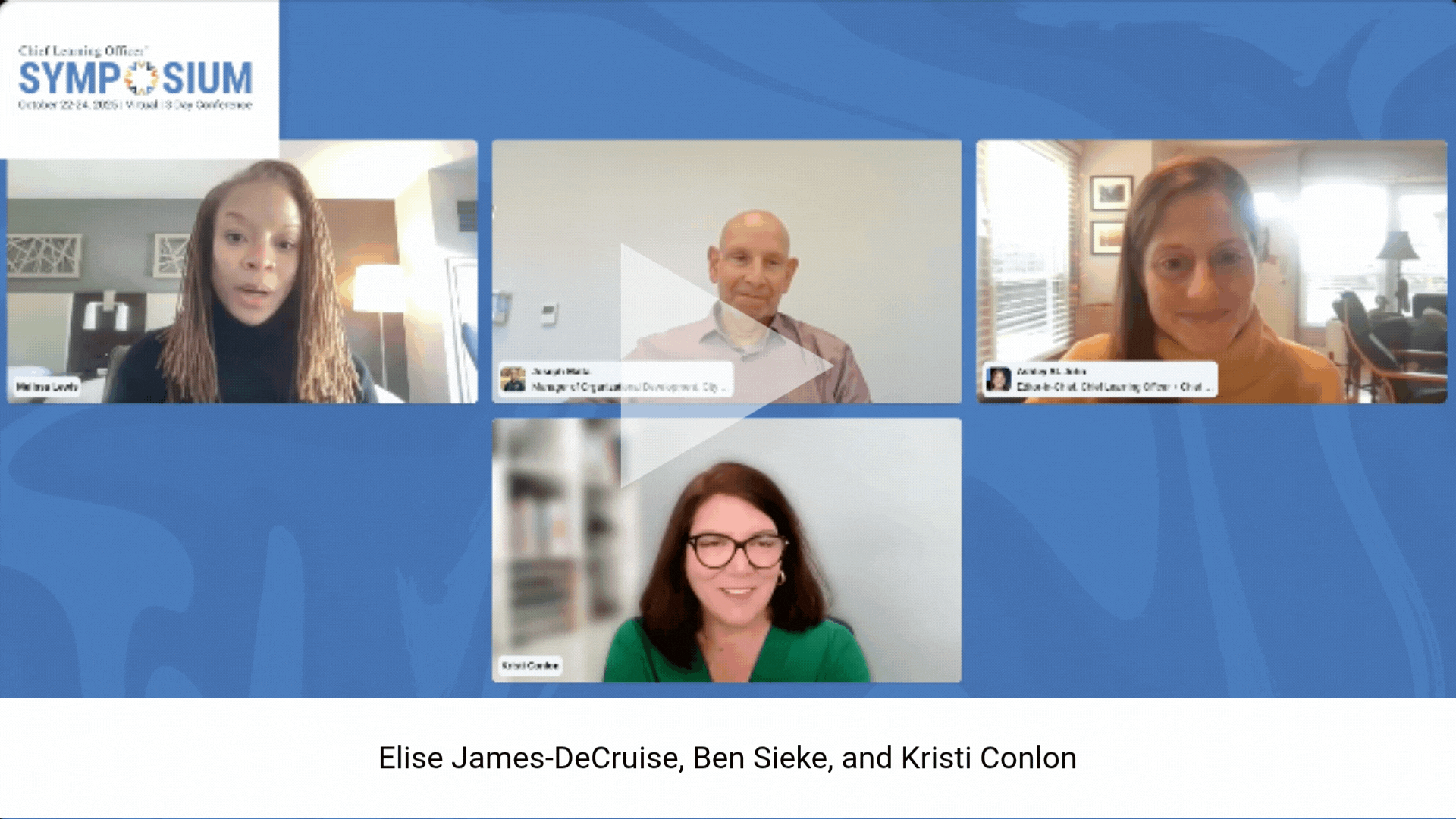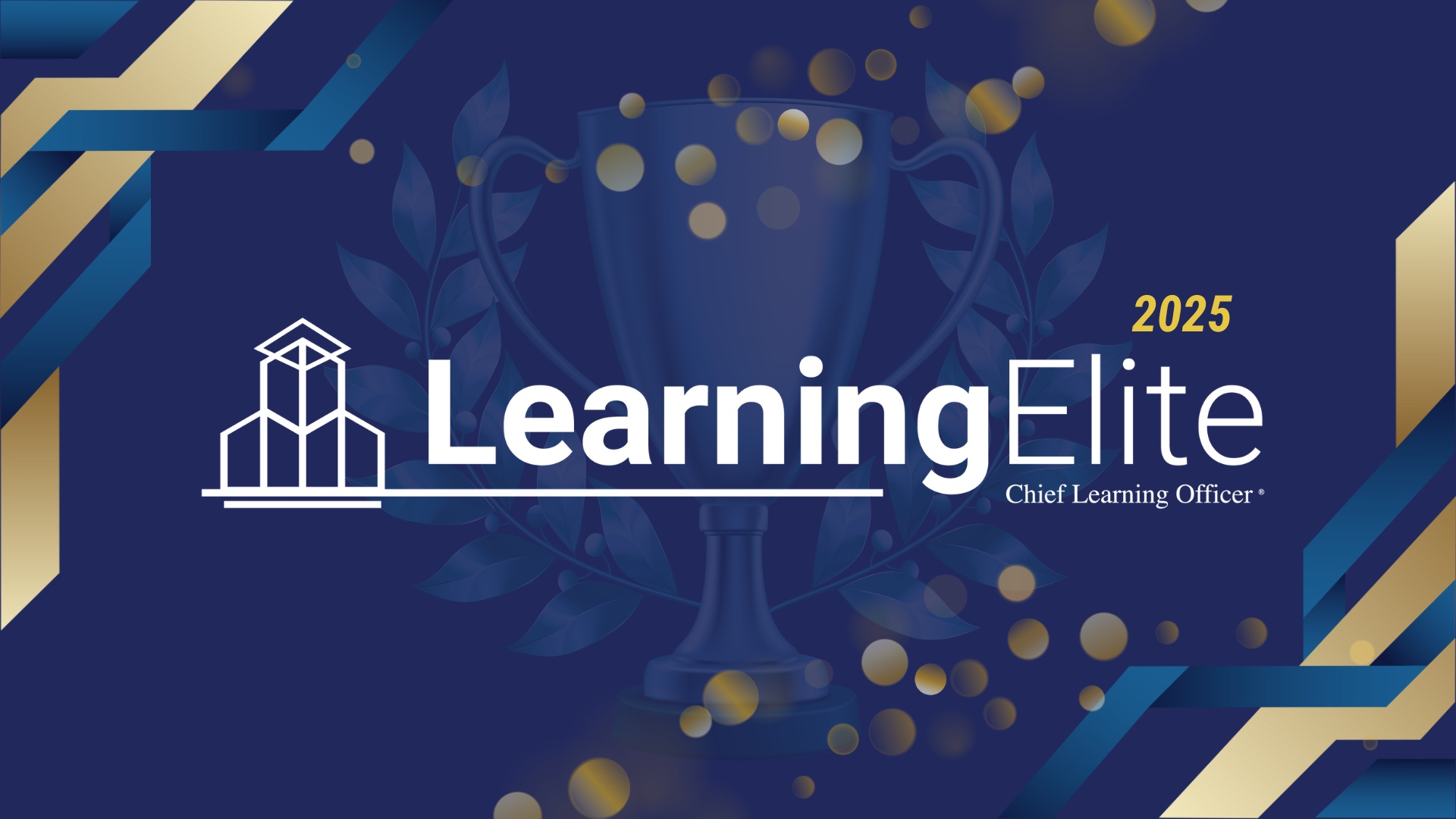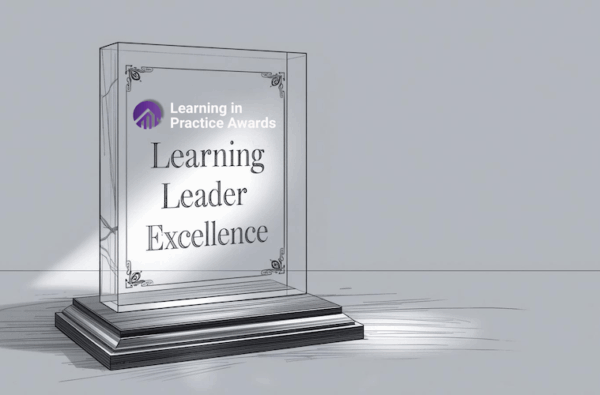<p>A common motif in myth and story is that of the young student or apprentice who grows to be more powerful than his mentor. In the film “A Star Is Born,” for example, an aspiring young singer, played by Judy Garland, eventually overtakes the established star, played by James Mason. In “The Matrix” movie trilogy, Morpheus, the master, plays a critical role, but it is the student, Neo, played by Keanu Reeves, who ends up being “the chosen one.”</p> <p>In the field of education, that motif is playing out as corporate learning departments supplant the traditional university — arguably the most prevalent model for adult education — in terms of practical educational effectiveness. Although there are many earnest professors dedicated to the engaging education of students, if one looks in general at the pedagogy of the traditional undergraduate and graduate curricula, one finds an educational system that has been untouched by those recent advances in learning effectiveness that can be found in many corporate training departments: goal- or action-based learning, blended learning, social learning and rapid development methodologies that can place timely information in the hands of people when they need it. </p> <p><strong>What Is the Corporate ‘Multiversity’?</strong></p> <p>A multiversity is a learning organization built on a series of multiples: serving multiple needs and goals, offering multiple curricula, serving multiple career paths and using multiple delivery methods and technologies. Those multiples are at the heart of the distinctive value proposition of corporate learning and are reshaping the way that companies, governments and even many traditional universities think about the role of education in creating the workforce of the future. </p> <p>At a time when an impending shortage of relevant, differentiating job skills is on the minds of many corporate executives — especially as the economy begins to recover — there is some urgency around whether the traditional university model is producing graduates who have learned how to learn and who are capable of collaborative and interactive working behaviors. </p> <p>Given the deficiencies of the traditional university, the corporate multiversity will play an increasingly important role not only in providing job-specific training and career advancement, but in skilling and reskilling workers to thrive in a challenging economy operating under new rules. The growing power of corporate multiversities will also reshape the way that alliances among industries, universities and governments are forged and for what reason. </p> <p><strong>Creating a Common Culture and Identity</strong></p> <p>To be fair, the use of the university metaphor in corporate learning adds a valuable sense of gravitas and tradition. And the ability of the established university to create a shared community — a common culture and a group of people with a shared identity (Go Hoosiers! Go Bulldogs! Go Maroons!) — is something not to be discounted. The word “university” itself, which is more than six centuries old, is actually related to a short form of the Latin phrase “universitas magistrorum et scholarium,” which means “a community of masters and scholars.”</p> <p>Helping to create and shape a similar sense of community can be an important value proposition for a corporate university. According to Carol Pledger, managing director of Goldman Sachs University, the corporatewide learning function for the global investment banking and securities firm, the university metaphor is extremely effective in reinforcing a common purpose and in branding the learning function. </p> <p>“We have a highly educated workforce, and most employees have come through the traditional university system, so Goldman Sachs University is an intuitive brand for us to describe what we’re providing,” Pledger said. “It communicates quite powerfully the fact that all of the continuing education for our employees is going to be housed under this one organization and single identity. And it enhances the Goldman Sachs brand as well, especially in the very competitive sourcing and hiring marketplace.” </p> <p>The presence of a university within an organization also clearly communicates to the workforce that company leadership believes ongoing educational opportunities are important to the success of the business. A university approach can also be valuable in creating consistency across a large, global organization like Goldman Sachs — both consistency of messaging as well as consistency of learning experiences. </p> <p><strong>Scholars or Educators?</strong></p> <p>In a wide-ranging analysis of the U.S. university system, Columbia University Professor Mark C. Taylor highlighted several developments that impede the ability of the typical university to address today’s most critical learning needs, especially when it comes to preparing students for a career.</p> <p>First, the typical university faculty has become specialized to the point of irrelevance, Taylor wrote in a New York Times article titled “End the University as We Know It.” Most graduate programs, he wrote, “produce a product for which there is no market (candidates for teaching positions that do not exist) and develop skills for which there is diminishing demand (research in subfields within subfields and publication in journals read by no one other than a few like-minded colleagues).” And all, of course, at an increasingly exorbitant cost to students. </p> <p>The typical university model, according to Taylor, “has led to separation where there ought to be collaboration and to ever-increasing specialization.” As departments and academic fields fragment, “research and publication become more and more about less and less.” </p> <p>It is the quality of the teaching and learning experience itself that is the real cause for concern, however. My own experience — 15 years in the university classroom and three years in administration — sensitized me to the risks of turning out university graduates who have not properly learned how to learn. Most of my students arrived in my classroom trained to do little more than sit passively taking notes. I had to spend large portions of class time reorienting students to an interactive, participative style of learning, focused on how the experiences in the classroom could be applied in their lives or jobs. As much as 25 percent of my allotted 10 weeks wasn’t spent on the actual course material, but on activities geared toward teaching my students how to learn. The recent university experiences of my children suggest that little has changed. </p> <p>Of course, many universities now have an online presence and are embracing learning innovations such as podcasting. As yet, however, many such offerings simply deliver the same kinds of passive learning experiences in a new way. It is unlikely that students who can download a professor’s lecture to their iPod are going to find it anything more than a convenient way to make up a missed class. The technology offers no added value to the learning experience itself. </p> <p><strong>The New ‘Multiples’ of Enterprise Learning</strong></p> <p>One should be careful not to paint too absolute a contrast between the current state of corporate learning and the traditional university system. In fact, the percentage of training courses taught in corporations through the same kind of classroom-based, passive learning model is still quite high. </p> <p>However, driven by marketplace needs, a great number of corporate learning organizations have embraced the need to retool learning experiences so they focus on outputs, not inputs. That is, they are evaluating their effectiveness based on changed behaviors, such as better ways to serve customers or more effective collaboration, rather than on the numbers of students trained or courses offered. </p> <p>I call these learning organizations multiversities because of their ability to deliver on several multiples, including the following:</p> <ul><li>Multiple delivery methods: Different learning modalities — such as classroom, asynchronous and synchronous e-learning, and mobile — are driven by individuals’ needs and learning styles. This includes multiple learning methods within the same course or curriculum to reinforce knowledge and shape new behaviors.</li><li>Multiple time frames: The traditional university setting is paced and designed for set time frames — semesters, trimesters, quarters. The multiversity setting is paced and designed around business needs, such as career advancement, new strategies and different assignments.</li><li>Multiple practice opportunities: According to Eric Davidove, CEO of Learning Ops Ltd., many traditional university settings offer “only a few practice opportunities available to students, such as homework assignments and internships. Learners in a corporate setting, by contrast, have multiple opportunities to practice on the job because the courses are not all taken at once. The pattern is learn, work, learn, work, and so forth in an endless cycle. There are multiple opportunities to apply, reflect and develop between the actual learning events.”</li><li>Multiple needs and goals: The multiversity can accommodate predictable kinds of learning experiences, such as new-hire training or general career advancement, as well as very timely needs having to do with new products or strategies. This produces a learning environment that is more agile and relevant to the needs of the business.</li></ul> <p><strong>New Alliances</strong></p> <p>Alliances between businesses and traditional universities are increasingly common, and such partnerships can certainly advance the innovative capabilities of both parties — driving new intellectual property and advancing the thinking across industries. </p> <p>The more relevant issue in this context, however, is advancing not simply the knowledge of the community of “masters and scholars,” but the skills of those coming out of secondary schools and universities as they enter the workforce. Multiple studies have painted a dire picture of the skills shortfalls that are already being experienced across all geographies. The recession has temporarily changed that picture, but it is also likely to underscore how permanently the knowledge economy has altered the skills that businesses and nations will require to compete effectively in a global environment. </p> <p>Eric Davidove, who has lived and worked in the United Kingdom for more than six years, points to the U.K. model as one that is likely to be ever more attractive to nations looking to increase workforce competitiveness in the global market. The U.K. government has become actively involved in leveraging the distinctive capabilities of corporate learning departments as well as of traditional universities. </p> <p>“A study commissioned several years ago looking at the U.K.’s long-term workforce needs concluded that the country’s skills base was mediocre by international standards,” Davidove said.</p> <p>Increasing the “multiples” that the university system could provide — using distance learning, for example — could be part of the answer, but it would be slow to develop, especially given entrenched perspectives as highlighted by Mark Taylor’s view of the university system.</p> <p>Instead, Davidove said, “the government has tried to improve the synergies and assets of both the corporate and traditional university systems. One innovative approach has been the creation of Sector Skills Councils (SSCs) — state-sponsored, employer-led organizations that cover specific economic sectors.” </p> <p>SSCs provide companies and organizations with the specialized skills required for their workforces. </p> <p>“The national skill academies allow employers to take control over the design and delivery of education and training for their sector and require the collaboration of employers, government and top education and training providers from both the public and private settings,” Davidove said. “Employer-led centers of training excellence help deliver the skills required by the employers and also help improve the productivity and competitiveness of the workforce.”</p> <p><strong>The Future of the Multiversity</strong></p> <p>Learning and business executives who are successful in developing a multiversity, and not just a training organization, should be aware of the scope and power of what they are creating. </p> <p>In an era when the answer to the majority of a student’s content questions is 0.27 seconds away via a search engine, the heritage of the traditional university as a “brain dump” by renowned professors is becoming increasingly irrelevant. What organizations and nations in the knowledge economy require instead are people capable of engaging in rigorous, cross-disciplinary problem formulation and collaborative work to solve those problems. That’s what a corporate multiversity can deliver, if organizations and their executives are willing to step up to the opportunity. </p>
- BUDDY PASS NOW AVAILABLE on CLO Symposium Registration, CLO Accelerator Enrollment and Membership.
- BUDDY PASS NOW AVAILABLE on CLO Symposium Registration, CLO Accelerator Enrollment and Membership.
- BUDDY PASS NOW AVAILABLE on CLO Symposium Registration, CLO Accelerator Enrollment and Membership.
- BUDDY PASS NOW AVAILABLE on CLO Symposium Registration, CLO Accelerator Enrollment and Membership.
















